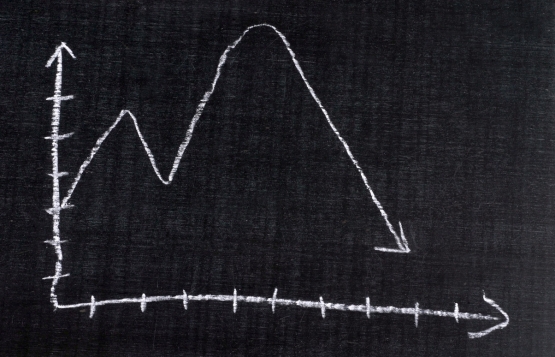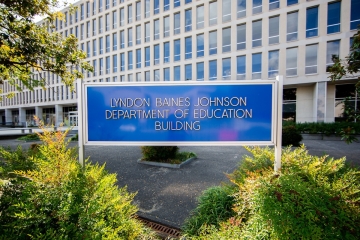It’s not with pleasure that I tackle the too-frequent topic of school shootings. The latest in Madison, Wisconsin, claimed the lives of two and left six others injured, just a stone’s throw away from my own school. Friends of mine were on the scene. Having worked in education for almost a decade now and watched too many of these events, I know that after such incidents, parents, teachers, and students often feel less secure after—noticing thin windows, feeling exposed during recess, wondering about every passerby. But being American education’s most horrifying yet intractable problem, discuss it we must.
Any examination of these tragedies must begin with an honest assessment of the problem. Remedy requires diagnosis. Unfortunately, misinformation abounds. Depending on the source, you’ll read that there have been anywhere from 83 to 323 to 971 school shootings in 2024 alone.
Why the discrepancy? In a word, definitions.
Does it count if a gun discharges near a school building on a Saturday and a bullet happens to graze the wall, as some databases define it? What if the victim is an adult gang member who happens to be fleeing across school grounds? What about a construction worker who accidentally shot himself while working on a school roof when students weren’t in session? What about suicides? Use an expansive definition of “school shooting” and these all quality.
But they also differ from what comes to mind when anyone uses the phrase “school shooting”—namely, someone entering a school that contains children and teachers and does so with significant firepower and the intent to harm as many individuals as possible. Trying to narrow down the incidents to these situations, Education Week counts thirty-nine, but even this number muddles reality. In a 2023 paper in JAMA Pediatrics, researchers analyzed 253 school shootings and found that the majority arose from “interpersonal disputes” and involved the use of handguns. In other words, most “school shootings” involve individuals caught up in community violence such as gang activity or personal grudges, not mass killings akin to Columbine.
I myself have encountered threats of such violence. In previous schools where I've worked, I’ve locked down with students in my room after a gang threatened to shoot up my school. Another day, I had to rush students into the building from recess because a gang member came onto our property to start a brawl. Students later told me that he brandished a weapon, though this was never confirmed. These were horrible events, but they’re separate from the lone wolf archetype who shows up with a semi-automatic weapon and a manifesto.
Active shooters remain rare occurrences and receive headline media attention. Other kinds of “school shootings,” much more common (though surely regrettable), we take as a matter of course.
Approaching this analysis from another statistic—violent deaths on school grounds, be they from shootings or otherwise—sheds additional light on the safety or lack thereof in American schools. In the 1990s, there averaged forty-three deaths a year, dropping to thirty-one per year in the 2010s. While there’s evidence that violence in schools has increased post-pandemic, schools are still safer than during the mid-‘90s peak.
To put those numbers in context, motor vehicle crashes were the leading cause of death for children for decades. Starting in 2019, however, firearm related injuries topped the list. That change occurred because cars became markedly safer, cutting the rate of death by car crash in half. Even so, since most firearm related deaths occur away from schools, it becomes clear that driving a student to school remains a riskier activity than sending them through the doors.
And the U.S. isn’t an outlier. According to researchers John Lott and Carlisle Moody, as far as the number of mass shootings in the world goes—be they lone-wolf shooters, terrorist attacks, mob violence, or otherwise—the U.S. has more Columbine-style mass shootings, yet is typical of gun violence at schools, broadly defined.
I lay out these statistics not to downplay any school shooting. Every single one is a horrible tragedy. But the blanket assertion without clarification from USA Today that schools suffered 971 shootings muddles reality and so our ability to respond judiciously: The majority of school shootings stem from community violence (not disturbed individuals), schools are safe places for children, and Columbine-style shooters are more rare than media panic might have you believe.
When it comes to remedies, I think there’s an uncomfortable truth here: There’s likely little that we can do to prevent active shooter scenarios. There are policies to follow that could reduce their frequency and empower schools to react more swiftly, either during an active situation or to a suspected threat. Even so, school loners are plentiful, but very few ever shoot up a school. It’s worse than trying to find a needle in a haystack. It’s more akin to seeking a slightly grayer shell on a vast beach of gray shells.
Gun regulations? Household gun-ownership rates were in decline for decades before the pandemic, and gun regulations were scant until the 1960s, yet mass shootings at U.S. schools are a comparatively recent phenomenon. And with 500 million firearms currently in circulation in this country, no regulation will prevent these events except for a universal confiscation, which is a political nonstarter.
Campus hardening? TSA-style entry points might stop a few, but school security isn’t perfect. Place a lone gunman near a door during school dismissal and, when students flood out of the single point of entry, we have another tragedy. Many school safety experts disagree about whether lockdown drills increase safety or, since most shooters are themselves students, simply broadcast to shooters a play-by-play of where the most potential victims will be and when. And according to one review of the research, “none of the currently employed school firearm violence prevention methods have empirical evidence to show that they actually diminish firearm violence in schools.”
Early warning reporting and threat assessments? In many of the active shooter scenarios of recent memory, there were signs that these students were disturbed and so a threat. But equally common were schools overlooking or ignoring these signs. Again, teasing out the difference between a typical loner and a potential school shooter is no easy task.
The Federal Commission on School Safety published a report with hundreds of recommendations for local, state, and federal-level policymakers. The three most important are the implementation of threat assessment teams, a free flow of information between schools and law enforcement, and a hands-on role of law enforcement in the evaluation of school safety procedures.
That being said, any student intent on violence will find a way. Any system will have a loophole to exploit. If the White House, one of the most secure buildings in the world, is regularly breached, there’s only so much that schools can do to prevent these (still rare) acts of violence.
If I have any recommendation, it’s that schools and localities focus on the more prosaic violence that they actually can control. Implement policies that mitigate crime in the surrounding area and so curtail the number of common, low-fatality school shootings. At the school level, strong behavioral systems would achieve three goals: They will give schools and administrators the tools to actually respond to students exhibiting threatening behavior, instead of shuffling it under the rug; they will reduce the non-fatal violence that too many students face every single day, ranging from hallway brawls to cruel verbal harassment; and they will create the welcoming, orderly school environments that would leave fewer students feeling either isolated or resentful. Not to mention that such policies will have far reaching benefits to far more students than will ever suffer the horrors of a school shooting.
Unfortunately, with students more isolated, spending less time with friends, wasting more time on their phones, and growing less connected to formative institutions such as churches or sports leagues, I doubt the trend of isolated school shooters will improve. That’s not a call to do nothing, but a difficult reality to face as we attempt to mitigate this horrifying trend.







